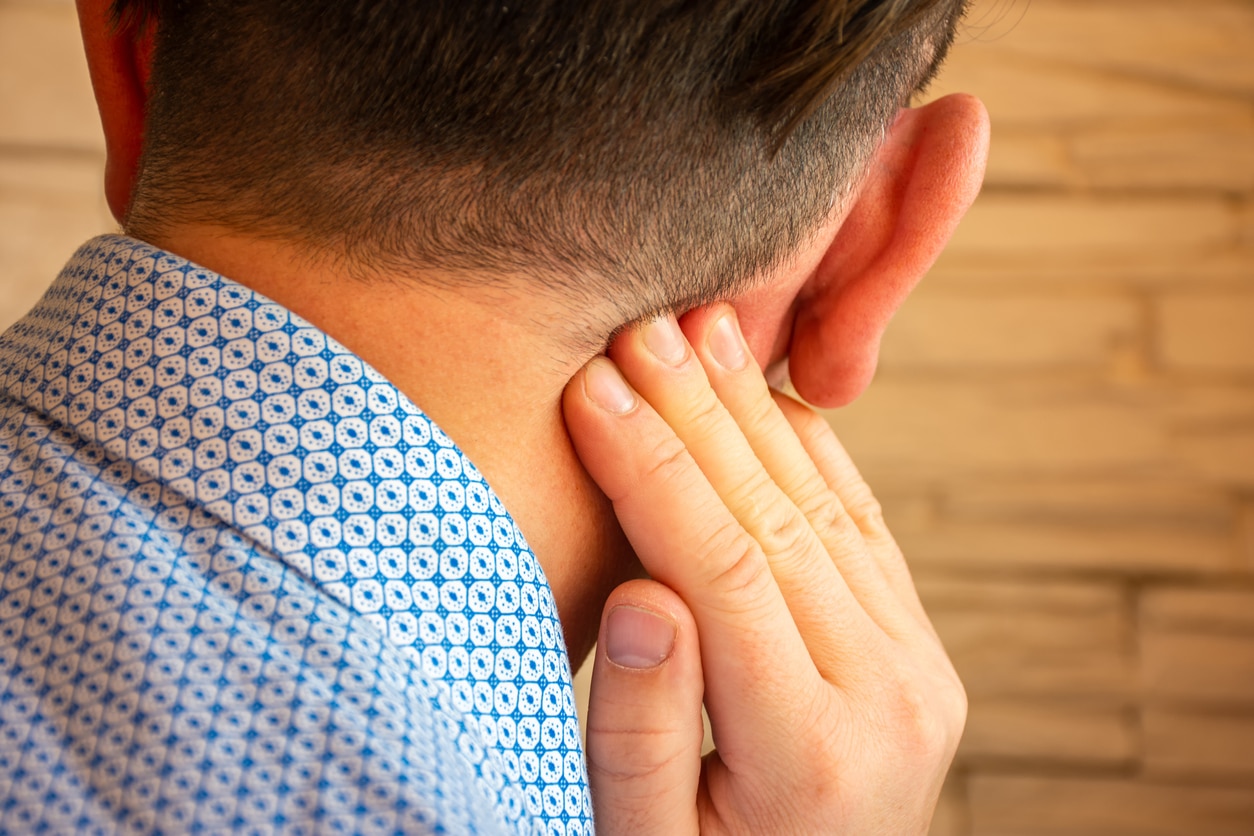There are many reasons you could have a lump behind your ear, ranging from acne to a swollen lymph node. Sometimes, the lump may go away on its own, and other times, it may need a doctor’s intervention. If a lump develops, contact your doctor as they can best advise you.
In the meantime, this article can guide you through potential causes.
Potential Causes of Lumps

To diagnose the cause of a lump behind the ear, the doctor will examine the lump for appearance and texture and take a medical history. Depending on the findings, they may order additional tests.
The findings may conclude:
- Lipoma: Lipomas are common, benign fatty lumps that can grow wherever there are fat cells. It is soft to the touch and is usually painless. They can be surgically removed, but it isn’t necessary.
- Acne: Acne is a skin condition typically affecting the face but can appear behind the ears as well. Acne cysts can form when pimples become inflamed. Acne cysts may be painful. A doctor can advise you on appropriate treatments, ranging from tropical to oral medications.
- Cysts: Cysts are fluid-filled sacs that can occur anywhere on the skin.
- Swollen lymph nodes: Lymph nodes filter toxins from the immune system and are located in various areas of the body, including behind the ear. Lymph nodes can be swollen for a variety of causes, ranging from infection to other illnesses. Treatments vary depending on the cause.
- Mastoiditis: The mastoid is part of the skull bone behind the ear. Mastoiditis is when a bacterial infection affects the mastoid. The condition is serious and requires medical attention. It will usually be treated with antibiotics or, in other cases, surgery.
- Cancer: A lump behind the ear can indicate cancer, although uncommon. A lump that is cancerous behind the ear might be irregular in shape, fixed in place and firm to the touch. Your doctor can run tests to diagnose a lump as cancerous.
Again, it’s always advised to contact your doctor if you have a lump behind your ear, especially if it’s irregular in shape, is painful, has discharge, changes or grows and is accompanied by other symptoms. It will oftentimes be a minor issue, but seeking medical attention can give you peace of mind, help treat the lump’s cause and provide any needed relief.
If you have questions about other topics regarding your ears, nose and throat, contact Charleston ENT & Allergy to schedule an appointment.
